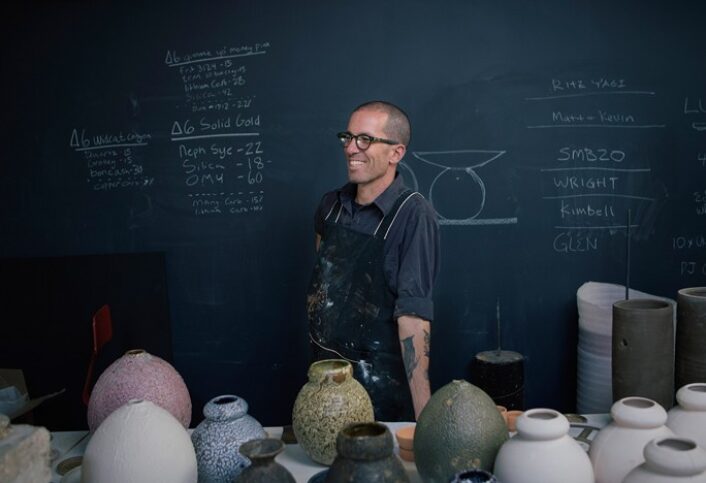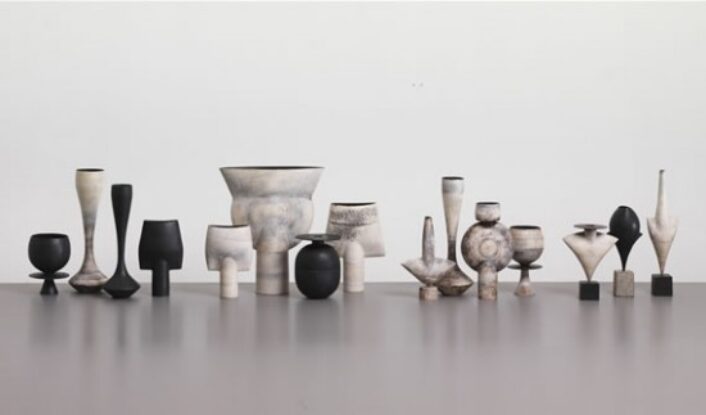Fine Art
Jeremy Anderson’s “Piccolos”
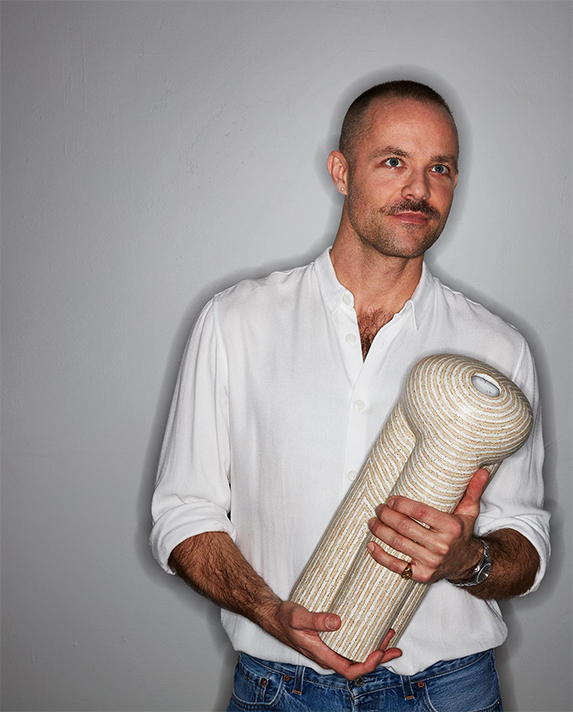
Anderson holding “Piccolo 32,” made of stoneware with sand, and hand-painted white stripes.
Image courtesy of: Wallpaper
In 2020, Jeremy Anderson, one of Apparatus’ co-founders, tried his hand at ceramics to much acclaim. As half of the duo behind the successful lighting and design studio Apparatus, the company’s offerings have brought a sense of elegance and unexpected styling to New York City’s design scene. Now, Anderson felt as though the time was right for something different.
Pushing his own limits with the debut of his first ceramics collection, Anderson is thrilled to be engaging creatively again. Recently, Anderson had been working on the operational and administrative side of Apparatus’ studio, leaving the creative vision and output to his work and life partner, Gabriel Hendifar.
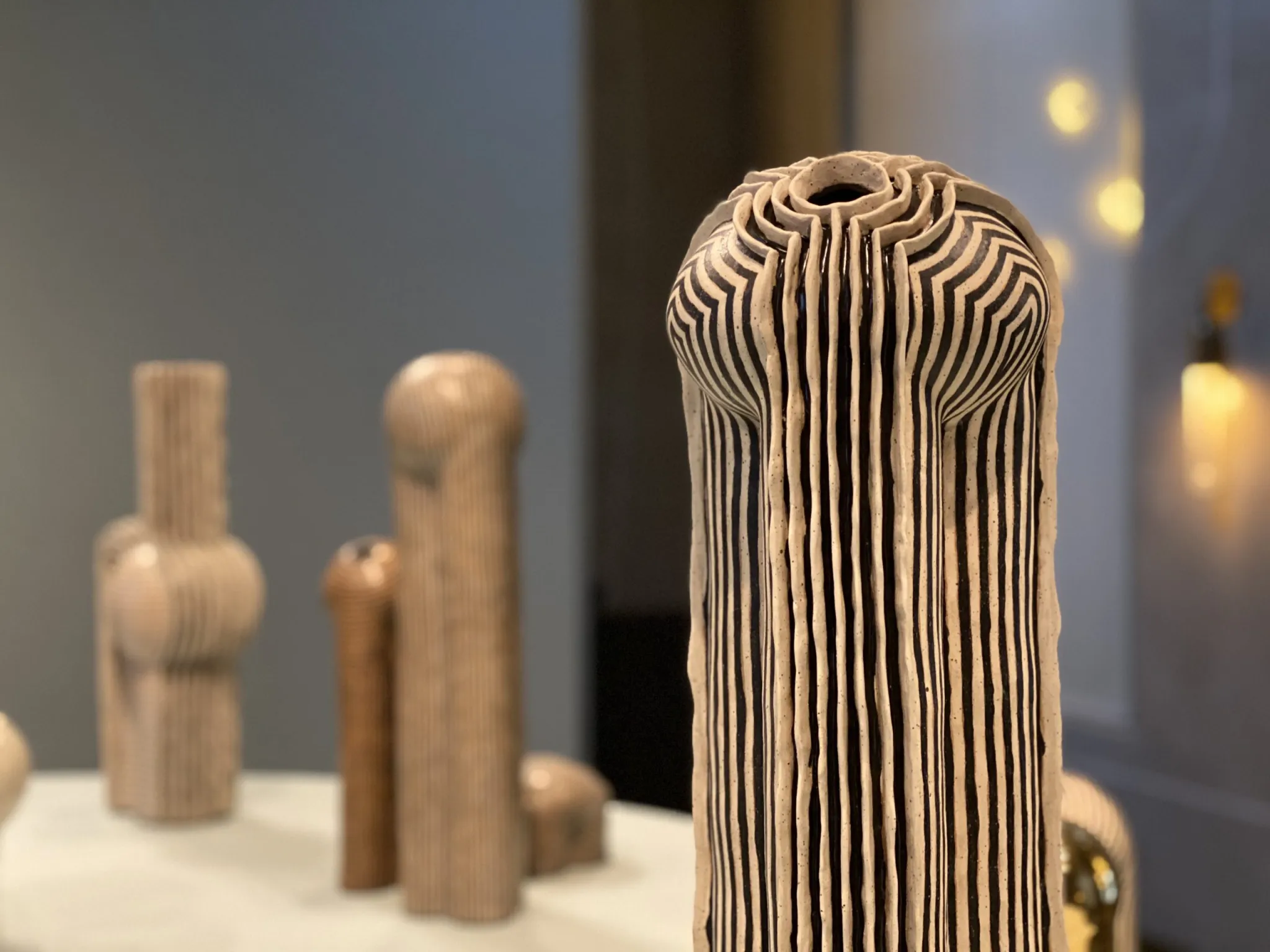
Growing up in Minneapolis, Anderson confides that his favorite things were paper dolls. Never feeling comfortable to play with them, he loved the dolls in secret. The artist credits this memory to the link that connects his childhood adoration to his ceramics practice.
Image courtesy of: Cool Hunting, photographed by: David Graver
The collection features a highly personal body-of-work that the artist had been working on for four years, inspired by Bernd and Hilla Becher’s black and white photographs of water towers and similar industrial structures. Courtesy of Wallpaper, “Anderson was struck by how each structure appeared like a different character embedded into the landscape, and began configuring individualized, anthropomorphic forms of his own.”
Prior to this collection, Anderson spent his time at the pottery wheel creating functional pieces such as plates and cups. This would often serve as Anderson’s creative outlet… away from Apparatus and life’s natural stressors. The artist says, “I would go to a community pottery studio here [in Manhattan], and throw, because that’s what I’ve been doing since high school on and off.” Luckily, Anderson was able to convert a detached garaged at the pair’s Rhinebeck property into a studio. Although something is amiss working alone rather than with a community of people, the ease of walking twenty steps to his pottery-wheel cannot be overstated.
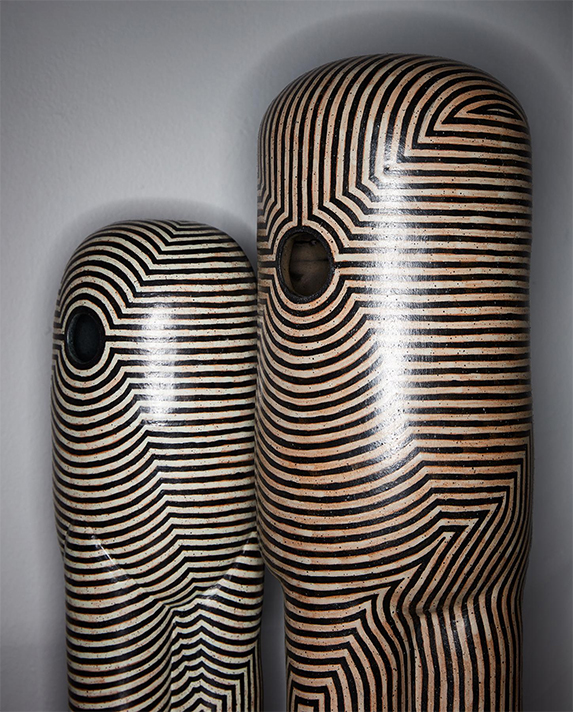
“Piccolo 14,” (left) is made from stoneware with black and mint hand-painted strips and “Piccolo 19,” (right) is made from black and stone hand-painted stripes.
Image courtesy of: Wallpaper
The silhouettes the Bechers’ photographed brought Anderson a sense of familiarity that goes back to his Midwestern childhood; he also fancied the photographers’ abilities to infuse seemingly inanimate objects with personality. One could certainly argue that each vessel is “humanoid.”
The stoneware and porcelain sculptures possess anthropomorphic features; each having his or her own character that is dependent on their size and form. For example there are small and stocky fixtures with three legs and tall, elegant forms with stripe patterns that Anderson paints onto the surface. Anderson points out that none of these lines are designed in advance; rather, they wind their way around the vessel and bow out organically.
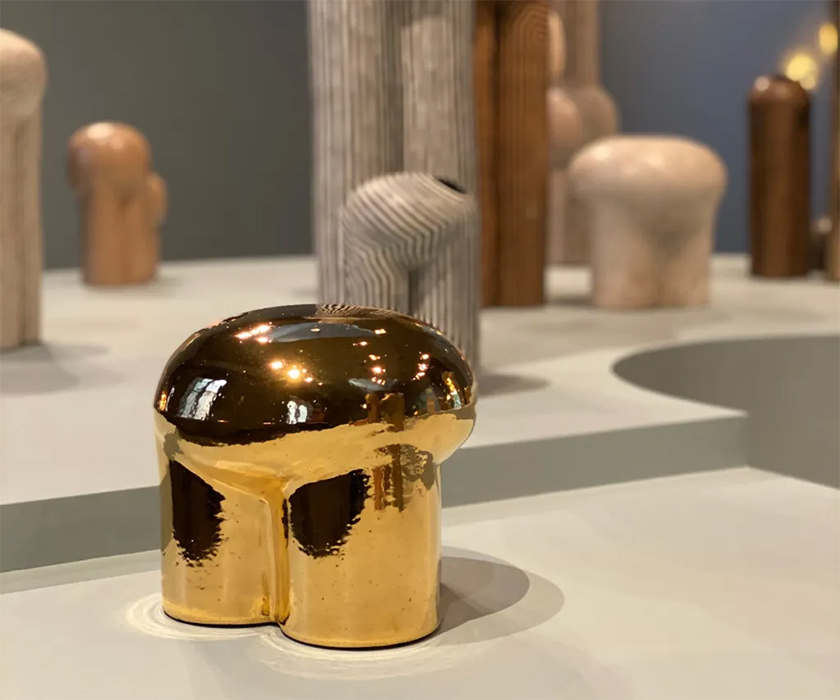
Just hours prior to the opening of “Piccolo Parade” at Apparatus Studio in New York City in 2020, Anderson added brand new figures that were finished in gold. He says (courtesy of Cool Hunting), “It’s a three-fire process and I did it on stoneware. You do a glaze and then you do a luster over it. It’s 22-karat gold and it comes it a teeny, tiny vial so you have to paint it on with a small brush. I had no idea if it would be this even as a finish—because most people do luster work in a smaller, detailed way.”
Image courtesy of: Cool Hunting
All hand thrown, the “Piccolos” seem to rise up from the clay as though they are growing upward, growing up… The small circular openings are described as the point of origin for each one’s personality. In addition, the hand-painted lines that come out of these openings have a number of variant contours and patterns, similar perhaps to humans’ fingerprints?
Staying true to the functionality that is behind the nature of ceramics, Anderson assures that each vessel can be used as a vase. Always a touch unconventional, he made sure that the water hole was not at the “top center” but rather placed somewhere unexpected.
Many of the pieces are made from unglazed stoneware that allows natural tones and textures to be highlighted. In an ode to experimentation, Anderson also made some vessels from raw porcelain which were coated entirely in 22-karat gold lustre. Gorgeous!
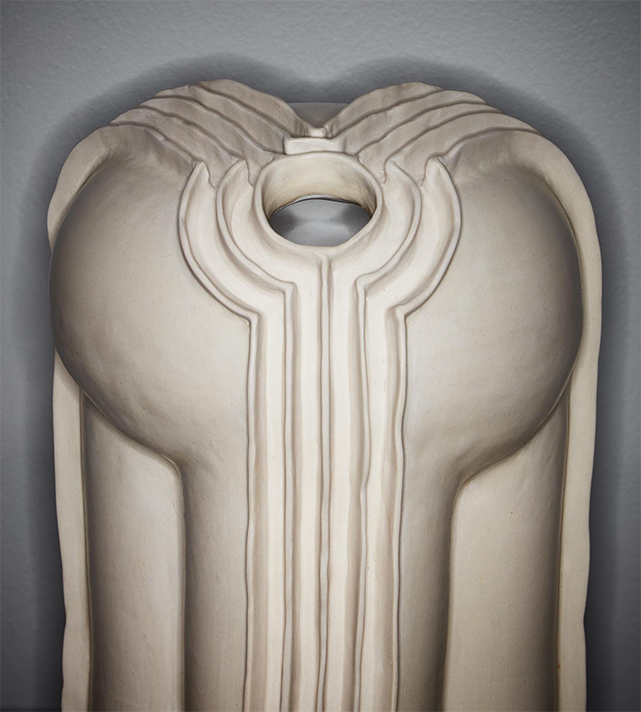
“Piccolo 34” is made of porcelain.
Image courtesy of: Wallpaper
The collection’s name pays homage to Anderson’s lover who died in a car accident in his early 20’s; “Piccolos” is the Italian word for “small”… the nickname his lover gave him years ago. Anderson said that this project has helped him reflect upon life. It is only fitting that the pottery-wheel looks out into the rural landscape. This is also the place where piccolos that did not survive the firing process are taken to upon their death. He says about his clay failures (courtesy of an article by Julia Felsenthal for The New York Times), “Working with clay, it’s inevitable. It’s a life lesson. It really gets you thinking about attachment, and about letting go.”
